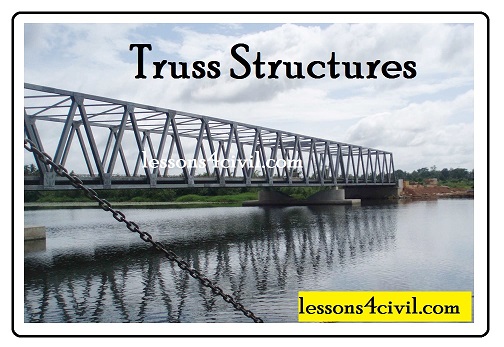Truss Structures
Truss structures consist of straight members which are joint together at their ends. As a result the geometry of a truss contains only triangles. However in reality there is no ideal frictionless joint, but the connection points of truss members can be assumed as ideal joint. By this simplification assumption, the only force in truss members is the axial force. In other words the external load are always applied at the endpoints of the truss members and not between them.
Before continuing this article I have to remind you there is slight gap between what we learn in theory and what exist in reality. Theories we learn are based some idealization and simplifications.
Why we use truss structures
The main advantage of using truss is to reduce the dead load of the structure. consequently the cost of construction is reduced due to a reduction in use of material. Moreover in some projects, such as swimming pool, using truss roof is the only option to avoid using columns. In simple words, for truss structures can be constructed in long spans, without any need for column support.
How to calculate the internal forces in truss members
To analyze truss structures you can either use numerical software such as ABAQUS, or calculate them manually. However using a software is very useful for complex projects, I advise to also learn the traditional methods. Both method has been covered in our video lessons.
How to design truss structures
Designing a truss is not something different from designing other structure. the general designing process is to start with a primary structure and optimize it by deleting less effective members and strengthening the more critical ones.



Comments